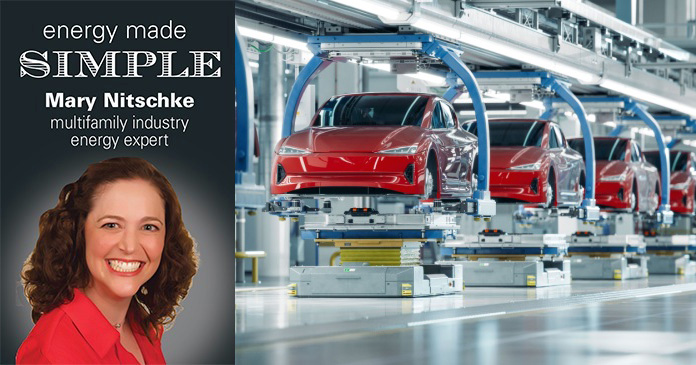A recent article on Trellis said that automobile manufacturers are pulling back from electric vehicle production due to lags in sales compared with those of other types of automobiles. This raises the question for multifamily of whether we need to invest in EV charging at our properties. The answer is that it depends.
As we discussed last week, it is much easier and less expensive to put the electrical infrastructure to support EV charging in place during new construction compared to retrofitting later. We also explored the renter’s feeling that having an EV charging station available at her community makes the community better (Class A compared to Class B).
Despite the recent production cutbacks from automobile manufacturers, I think the decision to install chargers will still be based on renter preferences, which affect not only new construction, but also existing properties that will need to compete with those new properties.
In real estate, the first rule is location, location, location. That rule is only partially true for EV charging stations. What real estate market your property occupies needs to be considered when determining whether to retrofit for EV charging. Do you have a lot of new construction to compete with? Is your property in a market like California that is pushing electrification and electric vehicle ownership? Is your property in a market with a more than average number of EV drivers? If so, your property location will answer the yes-or-no question of do I invest in EV charging for my community?
Where electric vehicle charging gets to break the rule of location, location, location is in considering where on your property the EV charging station is placed. Your marketing team or designer might want it front and center by the leasing office to attract new residents. However, your electrical panel at this location might not be able to support level two charging. Do an electrical load study of your existing property to find where you might have capacity to add the load of an EV charging station (240 volts). Add the station where you have existing electrical capacity to reduce your costs for the retrofit. An electrical panel upgrade can cost $25K or more and there really is no ROI other than keeping up with the Joneses with respect to providing EV charging.
Don’t worry if the charging station needs to be located at the back of your property. My discussions with EV drivers show me that they are not unreasonable. In fact, one shared with me, “I don’t care that I have to park on the opposite side of the property from my unit if I can charge my car. I just need to charge it.” In fact, when I surveyed EV drivers, they unanimously understood that operators and owners may be limited in where they can locate a charging station on an existing property. All the drivers really care about is that they can drive home to your community and recharge their cars.
















